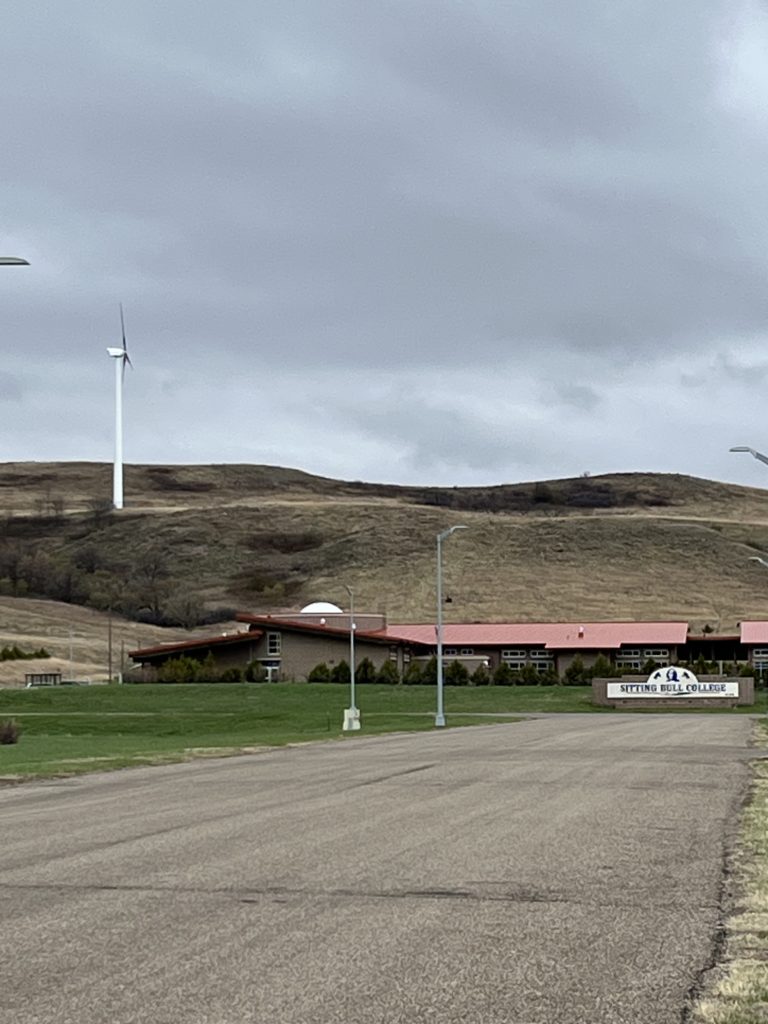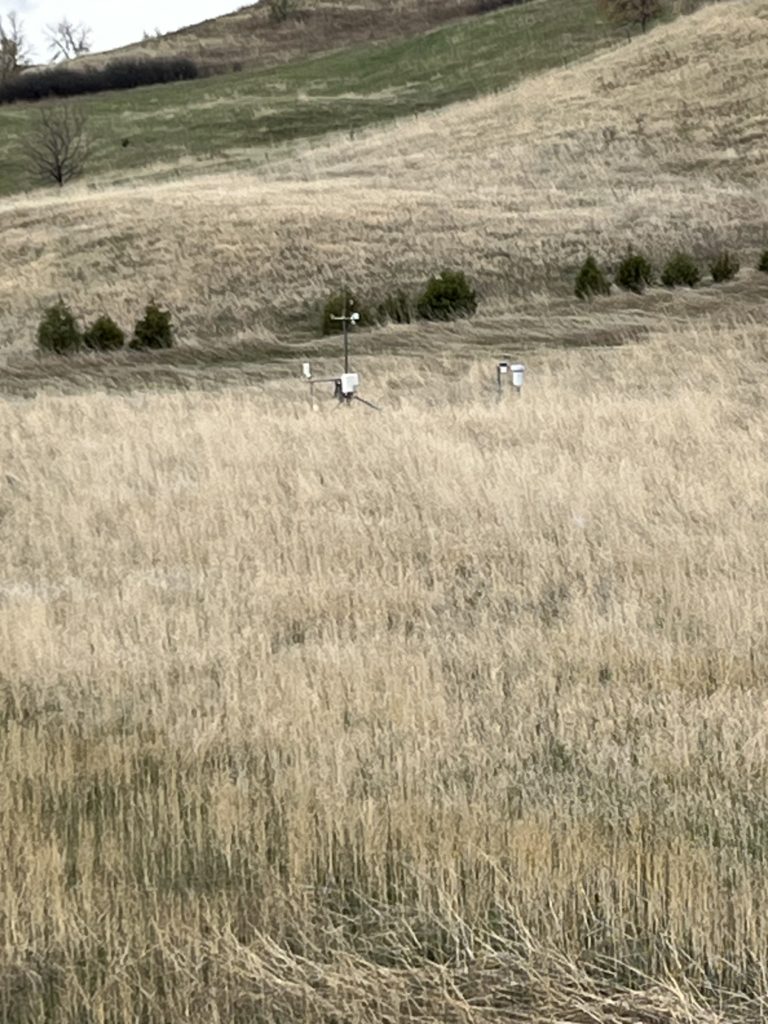Working together with Sitting Bull College and the Standing Rock Reservation, CoreCollaborative International is part of a team that is building STEM pathways for native American students. In this public/private partnership, Sitting Bull College (SBC), a tribal college with locations in both North and South Dakota, was rewarded a sizeable grant from the National Aeronautics and Space Administration (NASA)’s Minority Institutional Research Opportunity program, or MIRO. NASA-MIRO’s mission is to develop the research capacity and infrastructure of Minority Serving Institutions, promoting STEM literacy and enhancing the capability of these institutions to foster NASA-related education and research.
Originally founded as Standing Rock Community College in 1973, SBC is today a fully accredited college offering 33 masters, bachelors, associate, and certificate level career and technical education programs. With 70 full-time faculty and staff, and 300 students each semester, the college is guided by Lakota/Dakota culture, values, and language. SBC’s self-professed aims are to build intellectual capital through academic, career and technical education, and to promote economic and social development.
The NASA-MIRO grant fits right into this mission. Building on its Bachelor of Science program in environmental science and newer Master of Science degree program in the physical sciences (the first Tribal College and University approved to offer this degree), SBU is using its NASA-MIRO grant to enact a multi-pronged plan of educational and scientific development. SBC is building and utilizing the first atmospheric weather station on the Great Plains. This facility allows for cutting-edge research in air quality by trained faculty, researchers and students, and is designed to give students the education and experience required for successful NASA-relevant STEM careers.
Project collaborators include NASA Langley Research Center, NASA Goddard Space Flight Center, the NASA Tropospheric Emissions: Monitoring of Pollution science team from the Smithsonian Astrophysical Observatory, the University of North Dakota Atmospheric Science Department, the Environmental Protection Agency (EPA) Office of Research and Development, and the Standing Rock Sioux Tribe EPA.
CoreCollaborative International (CCI) was brought into this ground-breaking project as an external evaluator. In that capacity, CCI, working together with a local onsite evaluator, collects and analyzes both qualitative and quantitative data from numerous sources, communicating regularly with project stakeholders, and reporting out annually to NASA-MIRO on findings. Methods of data collection are related to the purpose of the project as determined by the evaluation team and project stakeholders, with the aim of assessing the extent to which the project is accomplishing its identified goals. At the same time, the evaluation team provides summative and formative information that can be utilized by project stakeholders. CCI came into the SBC and NASA-MIRO orbit, and to its role in evaluating this project, through existing relationships in university, NASA, and tribal circles.
Though CCI has been working for years on federal contracts, including with NASA, this project with NASA-MIRO and SBC brought a valuable opportunity to work alongside a tribal college and to support NASA’s aim of engaging historically underrepresented voices. CCI co-founder Dr. Loren Intolubbe-Chmil, who serves as CCI’s project lead, notes that her own tribal affiliation, and awareness around indigenous knowledge and perspectives, helped to cement the relationship, and continues to inform the work. The project began just as the pandemic had shut down the entire reservation, and amid the ongoing Dakota Access Pipeline protests.
During this period, face-to-face visits were challenging. But the project start-up was put on firm footing by Dr. Intolubbe-Chmil’s understanding about how indigenous spaces such as Standing Rock work differently from spaces in the dominant culture. The evaluation team has been able to negotiate its work well despite the physical distance.

Establishing and then building on close relationships with the tribal college and community has been key from the project’s beginning. No relationship has been more crucial than the one between CCI and its locally based independent evaluator, Kathy Froelich, an educator who has been living and working in the Standing Rock community for decades. Froelich and Intolubbe-Chmil work jointly to fulfill NASA’s multiple evaluation needs, collecting annual surveys, interviews, and (for MIRO) evidence that the project is creating STEM pathways for Native American students.
The pair do this in a collaborative way, each contributing from the different position and expertise that she holds. Froelich takes the lead on the K-12 and tribal community components of the evaluation. She’s the regional connection with a deep understanding of the community, who sits down with students in face-to-face meetings at SBC. Meanwhile Intolubbe-Chmil, with “one foot firmly in the dominant culture and the other in indigenous culture,” maintains the NASA-facing side of the project. “We both understand each other in the in-between space,” Intolubbe-Chmil explains. “Kathy is able to communicate better locally, bringing the local into our conversations. Then I can take those conversations and translate them into the language NASA needs to hear, without losing the integrity of that lived experience. We’re both interpreting things into different languages.”
NASA has responded positively to their joint reports, and the relationship they have forged has been both rewarding and a value-added for the project.
The NASA project has already brought positive impacts on the Standing Rock Community and on the opportunities that students have in college. Through its programming, a “small but mighty” group of students have been able to move from bachelor’s to master’s programs, gaining exposure along the way to doctoral students, to NASA mentors, and to leaders in the field. Younger students are included through summer camps that bring middle schoolers into the project goals, and provide them mentoring from the older students – thus creating a pipeline for the next generation of STEM scientists and tribal leaders.
An equally important outcome is that students moving through the pathway are learning how to use their voices in effective ways within the community. Like Froelich and Intolubbe-Chmil, these students are also, in a sense, code-switching. They already knew there were environmental concerns in their community and region. Now they’re learning how to use their experiences in STEM education to speak knowledgably about these concerns and to influence outcomes.
For example, using an instrument that measures changes to local air quality due to wildfires, students come to understand both how to monitor instrument data, as well as how to communicate with the local community about the impacts of air quality on daily life.

So while students learn how to use complex instruments and to become leaders in the work of installing, maintaining and reading these instruments, they are not just becoming NASA wonks. They’re also learning the language of influence, and they’re integrating that with their indigenous knowledge and perspective.
A report from one of the NASA mentors illustrates how powerful this outcome can be, even at the individual level. This mentor described the transformation she’s seen with one student in particular, who went from being very shy and hesitant, to taking leadership positions in the project and at her college. Again, this was during the pandemic when students’ internships were conducted remotely. Even under these less-than-ideal circumstances, the project partners found that – once the facility was built, classes were added, and students were given more exposure to NASA staff even by Zoom – Sitting Bull College students could not only see a future in STEM, but could also use that future to become leaders in their community.
CCI works on federal grants regularly, but the NASA-MIRO project in particular demonstrates the kind of transformative possibilities in the world that the CCI team is all about. Building on its extensive network and on program evaluation and other skills and expertise, CCI works to deepen connections. Intolubbe-Chmil says it has been an honor to work closely with Standing Rock, the very community that has been bringing awareness and activism to the project of forging different relationships to water, to land, and to speaking truth to power. “For CCI, this project represents an opportunity to work specifically with a tribal college and indigenous community to demonstrate the kind of work we’re committed to,” she says.
“There’s something deep and directly systemic in how we talk about justice, equity, diversity and inclusion work. It’s to NASA’s credit that this kind of work is being funded, and it’s our responsibility to tell the story well. That’s a transformational opportunity – but in fact that’s also what the indigenous perspective is grounded in: interconnectedness, interdependence, relationship. I think CCI has amplified the importance of relationships and networks. It’s a foundational value that you can find in any one of the areas in which we work. And it’s something CCI does consistently: it maintains fidelity to relationships.”
Whatever the task, CoreCollaborative International’s work is enriched by its unique perspectives and approaches to relationship-building. To find out how your organization can benefit, contact the CoreCollaborative team at info@corecollaborative.com.
